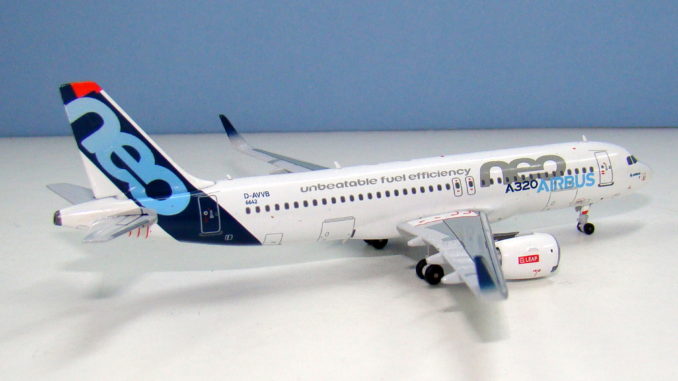
Panda Models have shown an agility and willingness to improve that the larger manufacturers have struggled to compete against. They may have had a shady start, with accusations (almost certainly truthful) of mould stealing and cloning, but they have been producing fine models and upgrading their existing moulds also. They were first to market with an A320NEO mould and now they have added antennae to it also. Let’s take a look at a recent example.
THE REAL THING
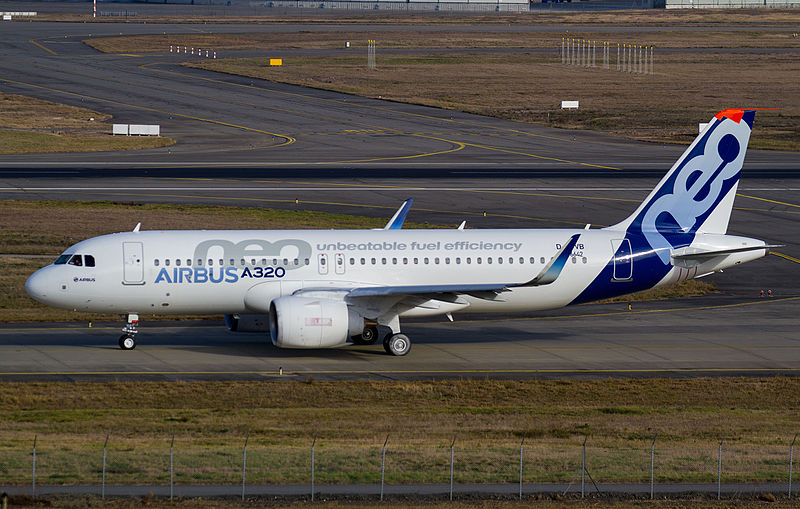
The A320NEO has suffered from well publicized delays thanks to Pratt & Whitney’s issues with its Pure Power PW1100-JM engines. The PW1100 is a Geared Turbofan engine, which put simply means that a reduction gearing between the fan blades and compressors allows both to operate at their optimum speeds (slower fan blades and higher compressor speeds). The competing engine on the A320NEO is the CFM LEAP-1A, which is a simpler more traditional design (also to be used on the 737MAX and Comac C919) – a twin spool engine with low and high pressure stages. This relies on proven engine technology but with improved thermal and propulsive efficiencies; but interestingly has been certified nearly 7 months after the PW1127G-JM on the A320. Nonetheless the progress of the CFM design has been smooth in comparison to its competitor.
For a lot more detailed analysis of the two engines I recommend this article at the Flying Engineer – it is rather complex though.
A320s delivered with the Pratts are A320-271Ns whilst those with the CFMs are A320-251Ns. So far 43 A320-251Ns have been built with deliveries to Frontier, Pegasus, AirAsia, Avianca, SAS and Azul. The competing A320-271N has had 65 aircraft built including the first A320NEO and the first production NEO. Externally there isn’t much to see visually to determine the different engine choice, but there is a small difference.
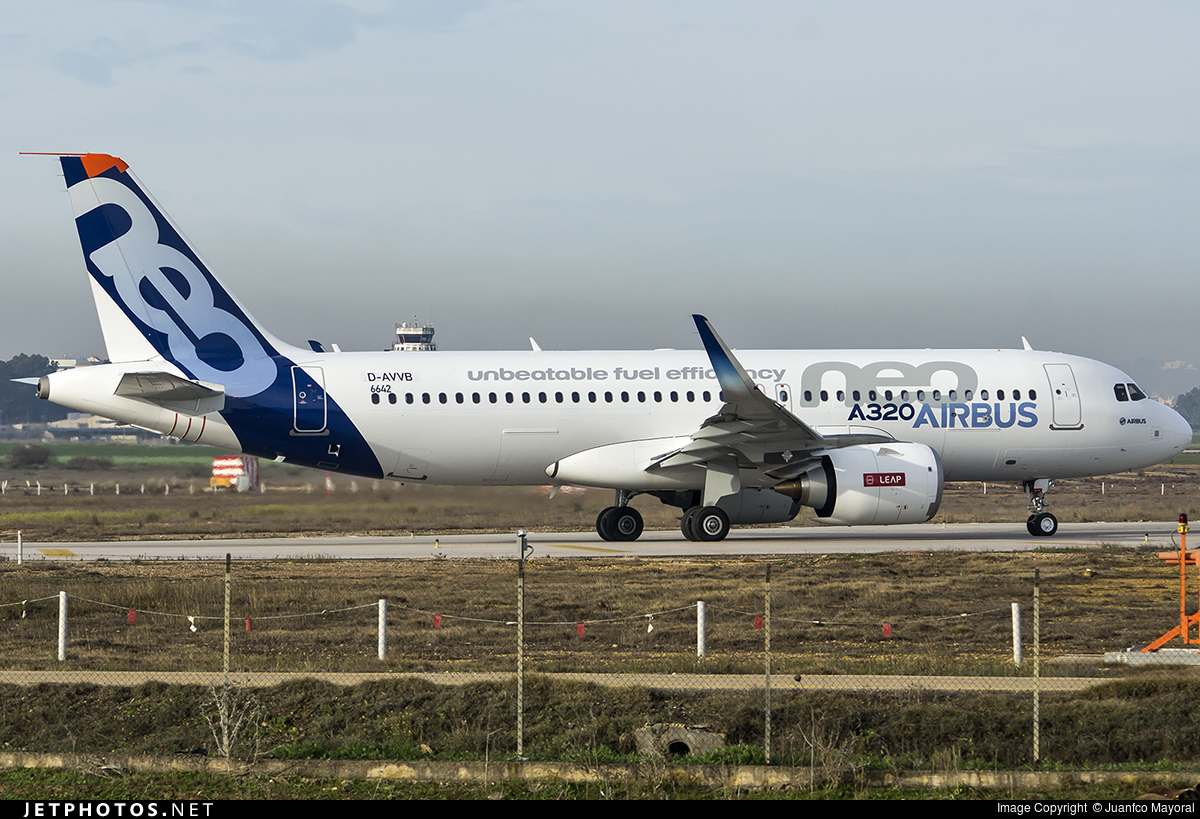
The first flight of a CFM LEAP-1A powered A320 was on May 19, 2015 when the second A320NEO prototype F-WNEW took off from Toulouse. She was joined on September 29 by D-AVVB. Over the years at least 12 other A319/20s have worn that registration but as of 2017 it remains connected to the 2nd A320-251N. The LEAP-powered A320neo received its Type Certification from the European Aviation Safety Agency (EASA) and the U.S. Federal Aviation Administration (FAA) on May 31, 2016. The first production A320-251N was delivered to Turkey’s Pegasus Airlines on July 21, 2016 and as Jean-Paul Ebanga, president and CEO of CFM International said at the time
“The opportunity to introduce a new engine family into commercial service happens once in a life time for many of us, so this is a very big deal.”
THE MODEL
The format for my reviews is to split them into three key areas:
- The mould of the aircraft
- The paint and livery
- Printing and quality control
Each can get a maximum score of 10 for a section giving a maximum combined total score of 30.
THE MOULD
Panda Models produced the first 1/400 scale A320NEO in September 2016 leveraging the excellent A320 mould they were using, which is almost certainly a clone of the Aeroclassics mould. Ethics aside this is mainly a good thing since the Aeroclassics A320 is the best on the market by some distance. All the first NEOs that they made (Lufthansa, China Southern and HK Express) have been Pratt powered aircraft and it wasn’t until the Beijing model show in April that they announced a pair of new A320s in the manufacturer’s livery one of which was equipped with the CFM LEAP engines. These NEOs also come equipped with antennae unlike the earlier releases.
So the mould, being the same as the Aeroclassics A320 is excellent. The shape is effectively perfect and leaves the A320s from Phoenix and JC Wings in the dust. The wings are also excellent and slot into the fuselage very well with no discernable gap and no wing angle issues.
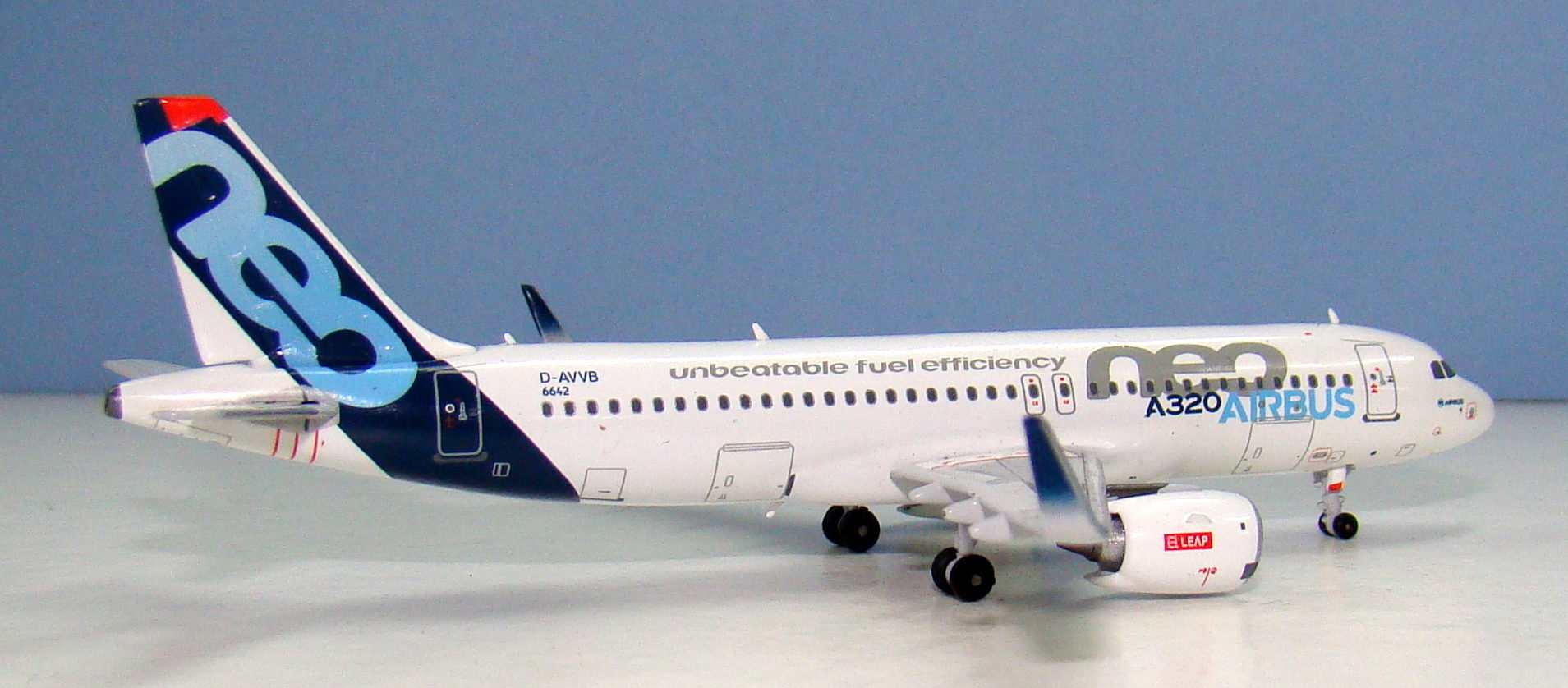
Aeroclassics never fit antennae to their models out of principle but Panda have recently begun to improve the Aeroclassics moulds they have ‘borrowed’ by adding antennae and it is an improvement. Unlike JC Wings, which often makes the antennae too large Panda have got the size correct and in addition they have fitted on this mould all four of them, unlike JC Wings, which regularly misses out the rear under fuselage antenna.
If there is an issue with the Aeroclassics and Panda A320s it is the landing gear. The gear itself is actually really nicely made. It’s not chunky and oversized like the JC Wings gear and is also correctly placed on the aircraft. The problem with it is the tyres. They are too small and have the simple tyre on spigot look common to Aeroclassics models. Sometimes the Aeroclassics A320s can have a nose down attitude because of the nosegear tyre being too small.
Unfortunately on the A320NEO, with its huge engines the small tyres have a larger impact as they are the main factor that doesn’t give the engines enough ground clearance. The earlier Pratt powered A320NEO actually has good ground clearance but Panda have gone to the trouble to model the difference between the Pratt and CFM engines on the nacelles and this doesn’t help the model in regards to ground clearance.
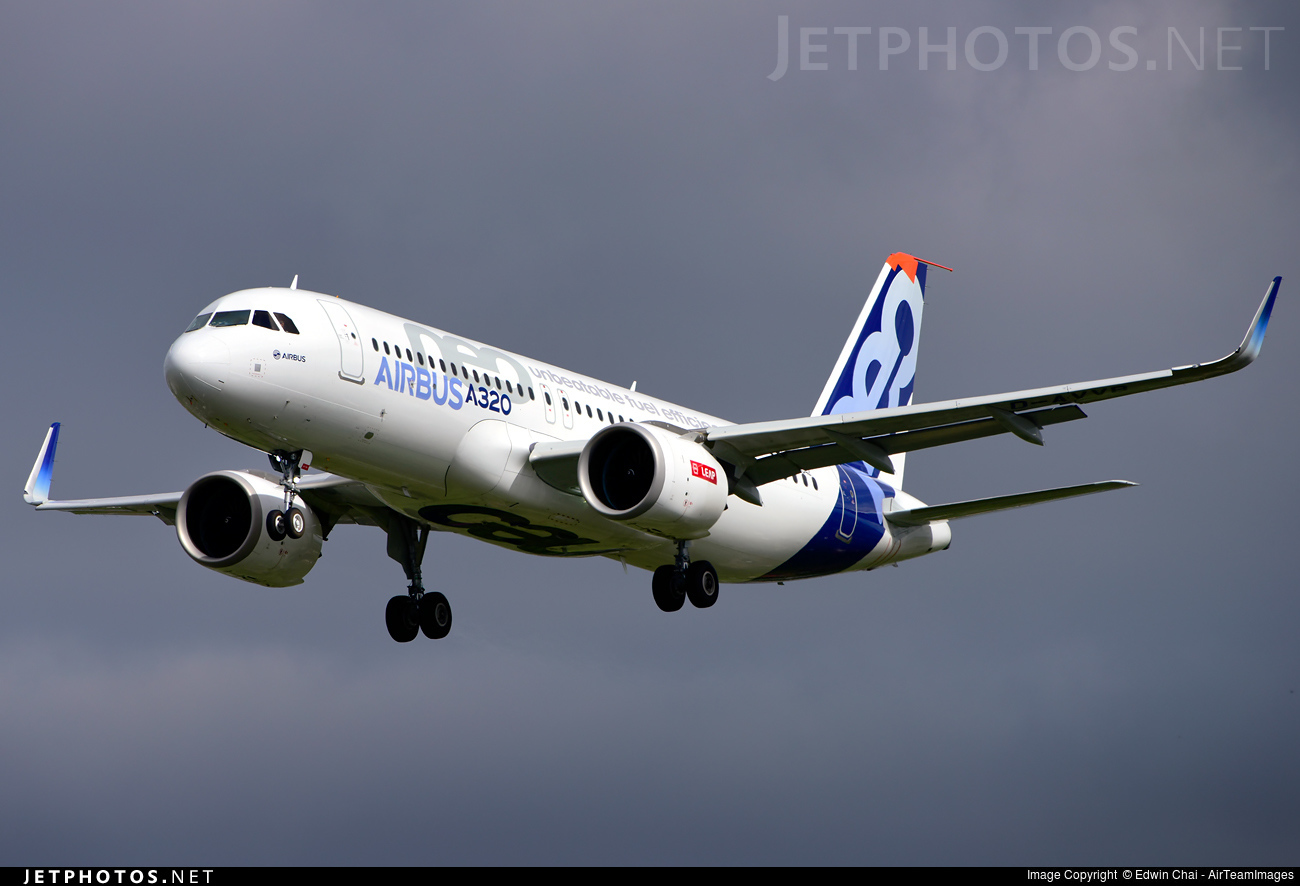
The main difference between the Pratt nacelle and the CFM LEAP is that the former is symmetrical from the front whereas the CFM has a small bump on its port side. Panda has modeled this well but it means the engine is even closer to the ground than it was before. The engines themselves are nicely sized and shaped but they do almost touch the ground. It isn’t as bad as the recent JC Wings effort but slightly longer gear legs and bigger tyres would go a long way to remedy the issue.
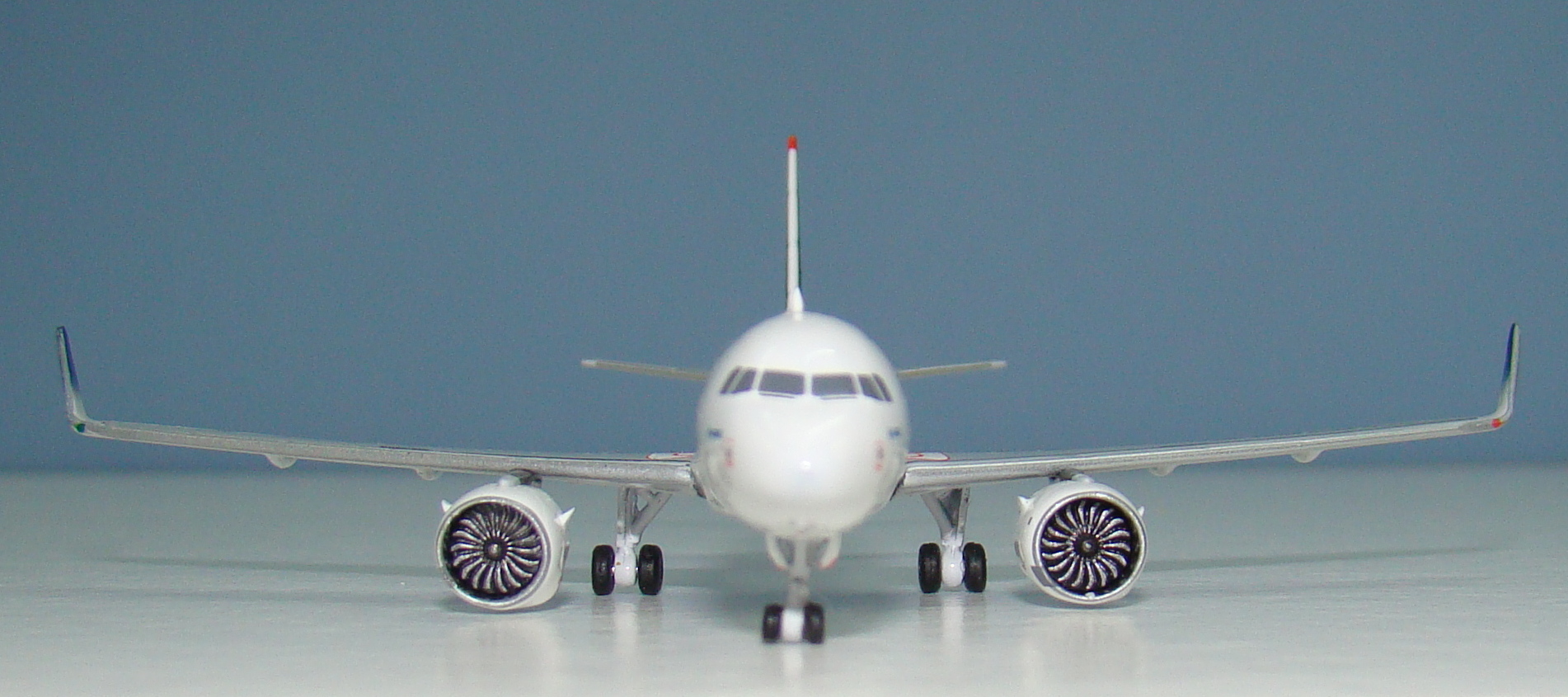
So overall it is a great mould and the addition of antenna has increased its value. As an A320CEO this mould is getting full marks but the engine ground clearance with the CFM LEAP engines (it is less of an issue with the Pratts) knocks a mark or two off.
SCORE – 8
PAINT & LIVERY
The modern Airbus house livery is simple compared both to their original multi-coloured A300era scheme and Boeing’s ever more complex 787 style house livery. Nonetheless it is an attractive and easy on the eye livery, which gets the job done.
Panda have got the colours 100% correct including the red test markings piece on the top of the vertical stabilizer. The tail markings are excellently positioned and the font is correct also. In fact the application of the livery is perfect all over. The long ‘unbeatable fuel efficiency’ titles look good and are in the correct place as is the large “AIRBUS A320 neo” titling.
Small parts of the livery like the registration, AIRBUS logo on nose and CFM LEAP titles on the engines are all present and correct. If there is an issue perhaps the Sharklet colour gradation doesn’t start light enough? That’s very minor.
SCORE – 10
PRINTING & QUALITY CONTROL
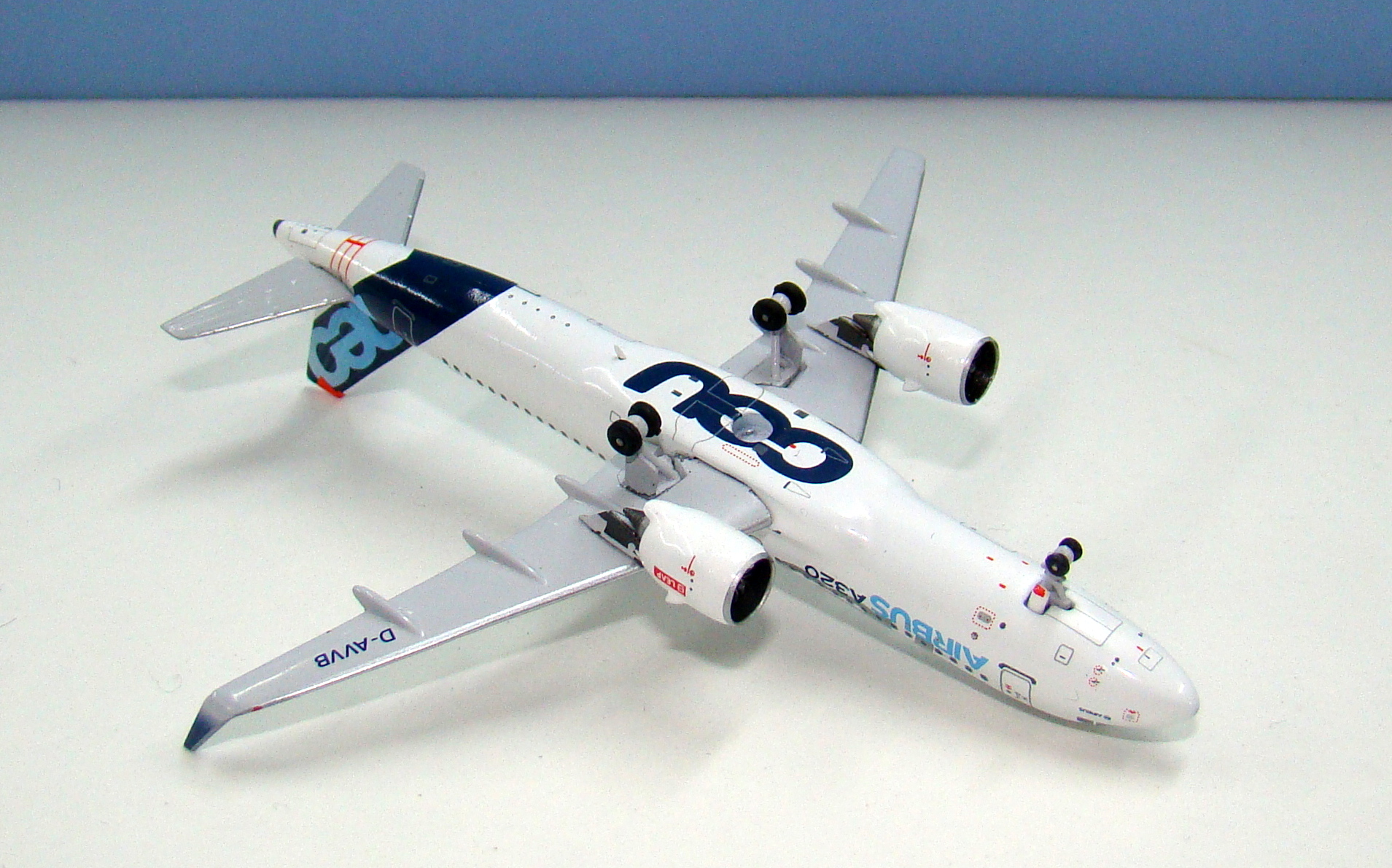
Printing on Panda models is almost always exquisite. For example here if you inspect the underside of the model (an area often skimped on – I’m looking at you Phoenix) then the detailing is superb. Every little scoop, dotted outline, door cover and light is present. It’s a great job with the only missing markings on the underside of the engine nacelles. Panda also do an excellent line in fanblade and inside engine colouring. The blades are a titanium metal colour whilst most everything else is darker. The detailing is very impressive.

Construction wise and the model is put together very well. Everything fits properly and the gear is all good too. There is a tiny paint nick ahead of the port wing join but it is barely visible.
SCORE – 10
CONCLUSION
It is another superb release by Panda and I bet none of the other manufacturers even bother creating separate engine moulds for their PW and CFM engines for the NEO. Having said that the issue of engine ground clearance on the NEOs (and 787s and A350s) is an increasing one. It seem very hard for the manufacturers to get the moulds to sit quite high enough for the engines they have. This is an area they must try harder at, but it is the only area of concern with this NEO, which is a marked difference to JC Wings first attempt.
FINAL SCORE – 28/30



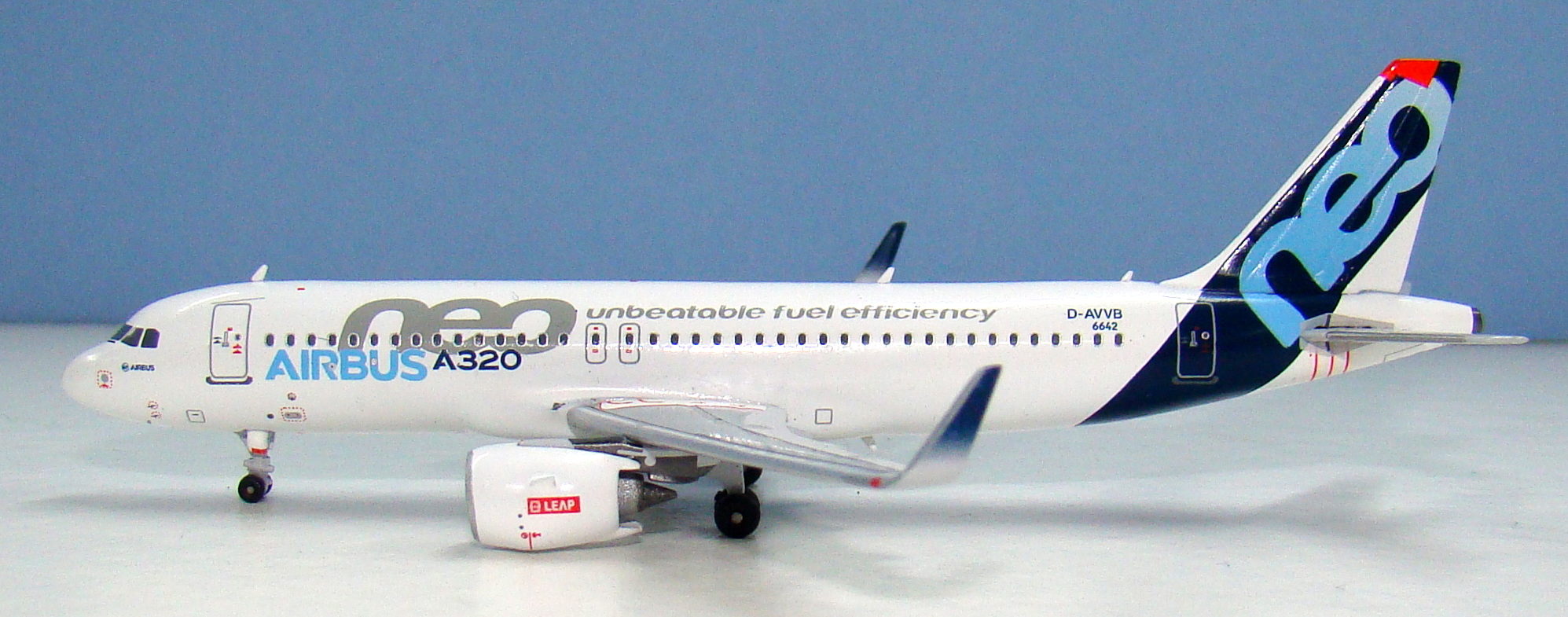
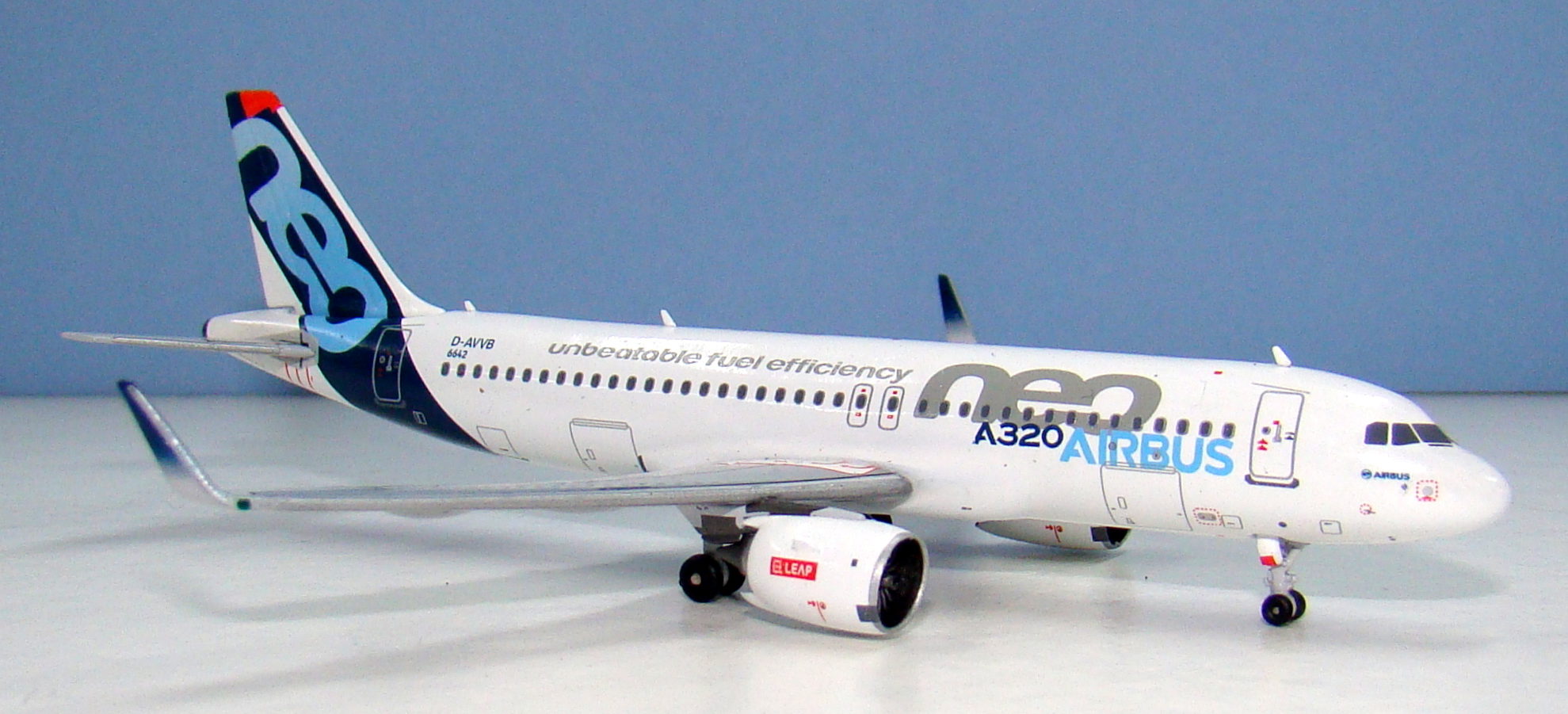
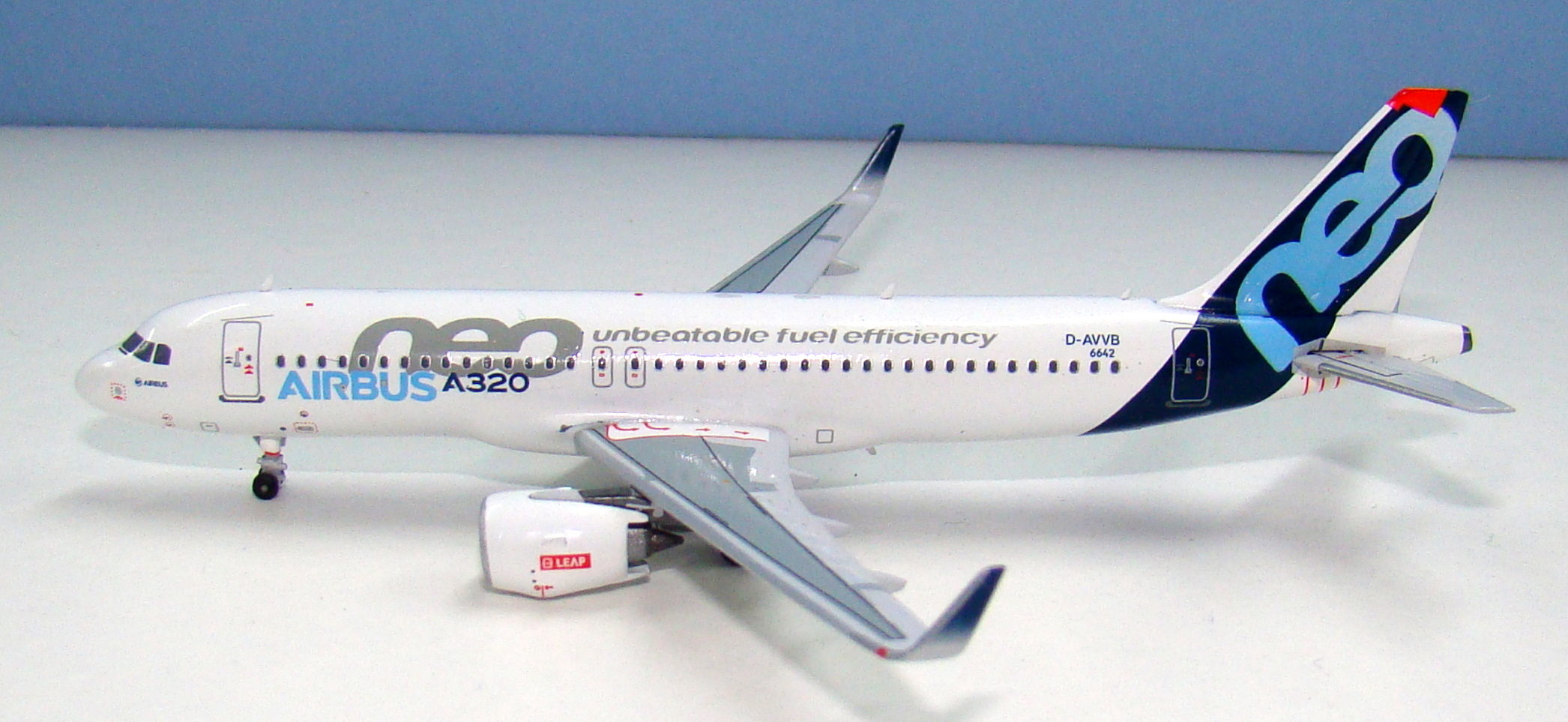
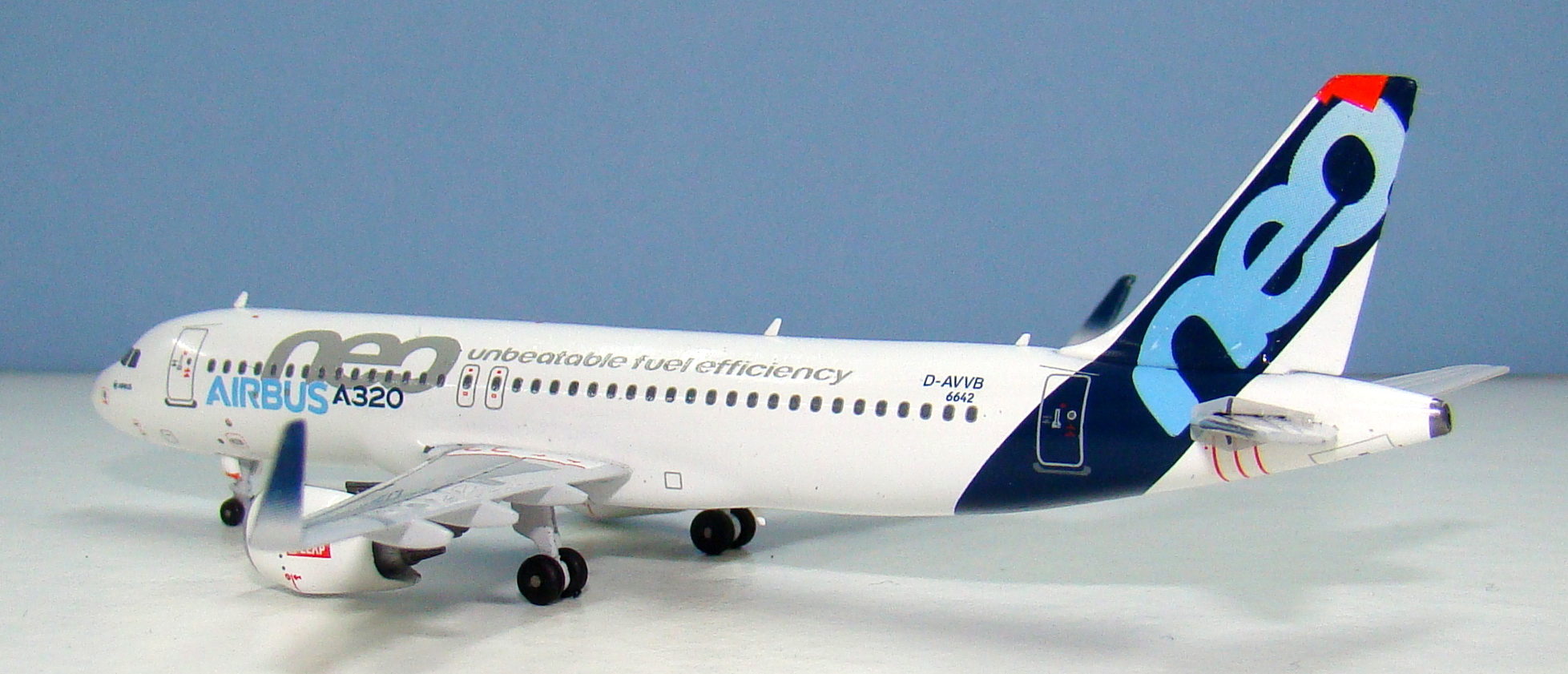
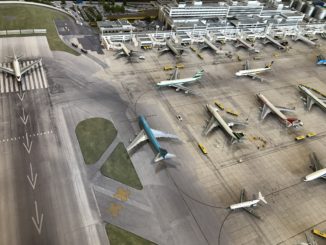

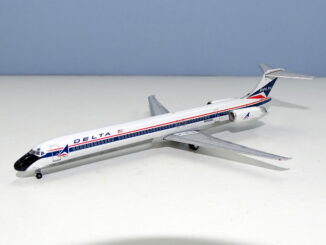
Hi Richard,
as usual, a thorough review. In the front on picture in ‘the mould’ section, the cockpit windows seem to be too small and tilting from starboard to port. Or is it the whole fuselage has that problem?
Sadly, we don’t put ethics aside, so with this model being a pirated clone of AeroClassics’ intellectual property, I would have scored your first category (Mould) with a big ZERO!! Thieves should not benefit, period!!
Where can i get this exact model? A provided link would be preferred!
It is almost sold out I expect. eBay or taobao are your best bets